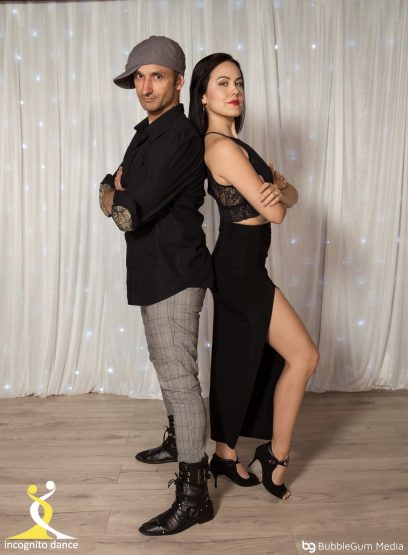Not known Factual Statements About Dance Fridays
Wiki Article
The Single Strategy To Use For Dance Fridays
Table of ContentsDance Fridays Fundamentals ExplainedThe Dance Fridays Ideas5 Easy Facts About Dance Fridays ShownThe 7-Minute Rule for Dance Fridays
Allow's consider Salsa dancing and music as a terrific big Tree that looks like this: Salsa is danced worldwide while several technological aspects of the dancing are the same throughout styles (6 actions over 8 beats danced on a quick-quick-slow or slow-quick-quick rhythm), there are several "trademark" features of the major styles of Salsa that distinguish one from the other.Couples taking part in a Casino site Rueda dance all relocate unison as called by a Leader. Distinct features of Cuban design salsa are circular turn patterns (with "break back" actions on matters 1 and 5) as well as body language motivated by conventional Afro-Cuban folkloric dancings. Distinct features of Cali design salsa fasts and elaborate maneuvering, danced with a strong hand hold link in between partners.
The beginnings of the style are a topic of dispute, but it is said that New york city design Salsa dancing came from the 1960's because of the increase of Latin American emigrants after the Cuban Revolution. Eddie Torres is the most popular New york city design dancer, being nearly globally attributed with promoting the style to dance centres outside of New york city.
The standard rhythm of "On-2" is slow-quick-quick. The "youngest" of the designs of Salsa, L.A. Design (some people have called it "West Coastline" design) became preferred in the 1990's and has its beginnings in ballroom (Mambo, Swing and Cha, Cha, Cha). Turn patterns lead and comply with techniques are heavily influenced by these styles, with the Cross Body Lead being the keystone of the design.
Some Known Factual Statements About Dance Fridays
Style are execution of turn patterns and numbers in the "port", with the break steps on matters "1" and "5". While Salsa music has strong beginnings in Cuban, Colombian and Puerto-Rican folkoric customs, it can not be marked down that all Afro-Latin and Latin American societies have added to contemporary Salsa music as we recognize it today.It's feasible that due to political reasons the contribution of Afro-Cuban culture and heritage to contemporary Salsa in the 1960's and 70's is not commonly identified, yet it can not be ignored the big contribution and impact of the "Queen of Salsa", Celia Cruz (salsa club san francisco). Many thanks to the internet and convenience of accessibility to information, the appeal of her explanation Salsa music, dance and society has actually spread like wildfire over the last 30 years and also then contemporary Salsa musicians proceed to pay homage to the Founding Fathers and Mommy of Salsa.
Today Salsa music is created, executed and popular globally. In 2000 the impact of Latin American music and culture (not simply Salsa) was acknowledged by the National Academy of Recording Arts and Sciences in the United State and the Latin Grammy Awards were created. The Latin Grammy's have actually brought focus to the Salsa Legends and modern Salsa artists alike
Some Ideas on Dance Fridays You Need To Know
differentiating qualities of Salsa music are: 4/4 time signature, Child Clave and Tumbao rhythms, Montuno Piano Unless you have a history in music, the above 3 characteristics possibly mean nothing to you. A less complicated means to describe Salsa music is exactly how it does NOT appear like other kinds of Latin American music.Bachata is a straight 4 beat dance with a frequency of a syncopated guitara line and a clear lack of any type of "tough" piano, brass (trumpet, trombone) lines. Cha, Cha, Cha looks like Salsa music one of the most as it seems like "really slow-moving" salsa/mambo. salsa club san francisco. Cha, Cha, Cha can be differentiated by it's focus of the double tumbao beat on matters 4 +5 and 8 +1 (the "cha-cha-cha") You have actually been to a Salsa evening at a club and you're addicted you like the songs, the power, the look of 2 professional dancers moving throughout the dancing flooring performing cool rotates and transform patterns
Most brand brand-new dancers choose to learn L.A. "On-1" style slotted Salsa styles are the most widespread in North America (with some exceptions of some city centres that still mainly accept Cuban and Puerto Rican designs) and L.A
The Ultimate Guide To Dance Fridays
L.A. Style will quickly teach rapidly show fundamentals of Principles timing, weight transfer and turn pattern transform. Lots of dancers, once they've had a year or 2 of dance L.A. Design Salsa under their belts, "switch" to New York style in order to diversify their dance vocabulary; but many dancers choose to stick to just one style of Salsa and enjoy their time on the dance flooring in that certain design.Design and New York City Design all being danced in the exact same club, with a number of the dancers being able to switch from one design to the various other from one tune to the next. No matter which style you choose it is necessary to adhere to that style up until you're very comfy with the basics of timing, body rhythm and structure relocation execution before considering "changing" designs (if you wish to).

Report this wiki page